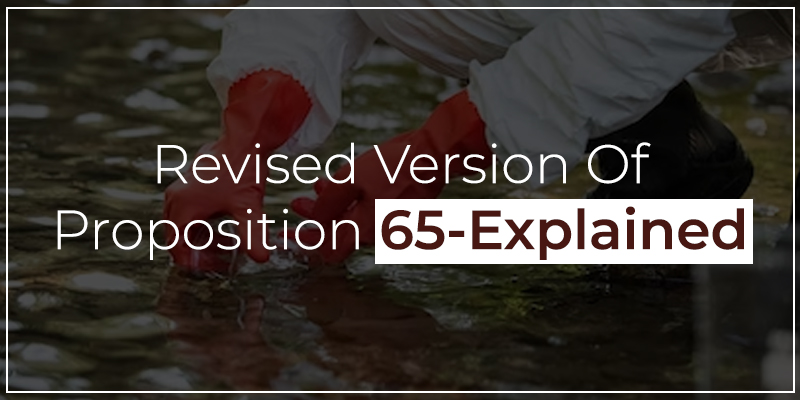
Water is one of the essential things for any living form to sustain in this world. Proposition 65, or the Safe Drinking Water And Toxic Enforcement Act of 1986, is an amendment implemented by the Office of Environmental Health Hazard Assessment (OEHHA) of California to protect the water resource from contamination and harmful substances. Thus, there is a constant upgradation in proposition 65, and many substances are added to the ever-growing list issued by OEHHA of toxic chemicals to prevent their impact on human health and the environment. Hence, in this post, let us briefly see the revised version of proposition 65.
Substances Included To The Existing Proposition-65:
OEHHA has added around seven chemical substances under Proposition 65. They are,
- Tetrahydrofuran (TFH)
- Perfluorooctane sulfonic acid (PFOS), its salts, and its degradation and transformation precursors
- Tetrahydrofuran (TFH)
- Perfluorononanoic acid (PFNA), its salts, and its degradation and transformation precursors
- Methyl acrylate (MA)
- 2-ethyl hexyl acrylate (2EHA)
- Perfluorooctanoic acid (PFOA)
- Technical-grade trimethylolpropane triacrylate (TMPTA)
The chemical substances PFOS and PFOA were already on the developmental toxicity of Proposition 65. However, after conducting intensive research, it was found to be more harmful and included in California’s Carcinogens list.
Why Are They Included?
The chemicals stated above, especially the PFOA, PFOS, and PFNA, are from the alkyl group, which comes under the per- and polyfluoroalkyl substances (PFAS) family. These are manufactured from the 1940′ s and have significant applications in the chemical industries and other sectors. The following are some applications of the stated chemicals, especially the PFA.
- Grease-resistant paper
- Microwave popcorn bags
- Containers and fast food wrappers and
- Nonstick cookware
- Paints, sealants, and varnishes
- Cleaning products
- Shampoo
- Cosmetics
- Dental floss
The chemicals such as PFAs, and other substances tend to break into smaller molecules and accumulate in humans, the environment, and animals. Hence, as a result, scientists have found that these chemicals can cause adverse health effects in living things. The common forms where these chemicals get accumulate are
- Drinking water
- Products from livestock reared in the dairy farm are exposed to PFA explicitly.
- Fire extinguishing foam
- The water and soil which exist near the chemical waste sites
- Fishes that are caught in contaminated water (PFA, PFOA, & PFOS)
These are not only concerned with California, but the European Chemicals Agency (ECHA) has also considered PFAs and related chemical substances in their restricted list of chemicals which is nothing but REACH compliance.
Changes In Labelling:
It is also essential that when you manufacture a product with restricted chemicals, you must mention it on your label to stay compliant with the law. The changes in your labelling include,
- If you use a short-form warning in your label, make sure your warning is displayed on a full-length package.
- The companies can use “California Warning” and “CA Warning” on their packaging.
- Updating the short-form warning in your packages with more clarity so that the consumers can read about the chemicals and know the harm they pose.
Hence, adding more substances to the restricted list with changes in the labelling can increase the risk of the manufacturer being non-compliant. Thus, Sunstream helps your supply chain comply by cross-referring with the updated database and assisting in streamlining your operation. We also help our clients comply with conflict minerals and SDS services for a seamless process.



 +1.585.935.7123
+1.585.935.7123 +91-804-148-6861
+91-804-148-6861